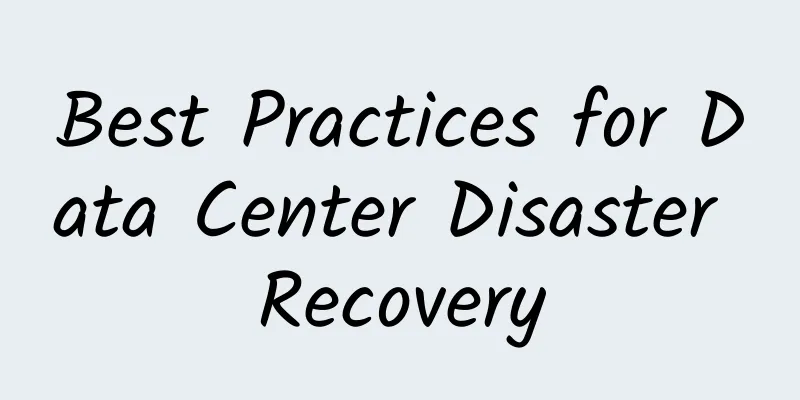Best Practices for Data Center Disaster Recovery

|
Today, data center operators worry about high availability of their data centers every day, working around the clock to ensure 100% uptime. They deploy redundant facilities to minimize risk, rigorously plan and test to ensure continuous operations, and take precautions to protect their infrastructure from environmental threats. However, even the best plans and preparations can go wrong in natural disasters or emergencies. In fact, in some extreme cases, advanced planning and preparation are still powerless, and disaster recovery becomes an important part of ensuring that enterprises can maintain functionality while rebuilding data center operations. In any disaster situation, time is of the essence, so data center personnel need to know the appropriate actions to take in the minutes, hours, and days following an event.
The safety of your personnel is the first and foremost factor, so once it is determined that all personnel are safe, the following recovery activities should begin:
While natural disasters are an inevitable risk, with the right disaster recovery plan, data center operators can minimize the impact of these catastrophic events and resume operations quickly and safely. |
<<: Seven trends in enterprise networking in 2018
>>: Health and Risk: A New Model for Data Center Capacity Management
Recommend
Why is Web 3.0 important? What are the basics you need to know?
Editor's Note: What is Web 3.0? How does it d...
Why are 4.3 billion IPv4s not enough? (IPv6 should take the blame for IPv4)
As we all know, the so-called IP address is a 32-...
"Resonance" Connecting Everything Ruijie Networks 2019 Internet Technology Summit Opens
The resonance of technology and business is drivi...
Will 5G replace WiFi? Not in the short term
As global operators begin to pave the way for com...
RackNerd: $19.99/year KVM-1.8GB/28GB/3TB/Los Angeles Data Center
RackNerd has launched some promotions in Los Ange...
Why don’t we have more options for in-building connectivity?
2019 was a transformational year for the telecomm...
RAKsmart March Promotion: Dedicated servers limited flash sale starting at $30/month, bare metal cloud/cloud servers starting at $1 for the first month
RAKsmart's "Everyone Goes to the Cloud&q...
Google says TCP congestion control algorithm BBRv3 performs well and will be submitted to the Linux kernel mainline this month
BBR (Bottleneck Bandwidth and Round-trip propagat...
Bluetooth has been used for so long, why hasn't it been replaced?
When it comes to Bluetooth technology, most peopl...
RAKsmart's year-end discount upgrade, G-port unlimited servers reduced to $99 per month, San Jose servers sold at $30 per month
A few days ago, RAKsmart released a notice of yea...
Actual combat: Can you believe it? Two VRRP hot standby gateways were installed in the operator's central computer room at the same time, but they fought with each other and caused the entire network to explode!
The case shared in this issue is related to VRRP ...
Yecao Cloud: Hong Kong independent server starting from 199 yuan/month, optional BGP/CTGNet/Huawei Cloud line
The blog has shared Yecaoyun product information ...
Three ways hotel Wi-Fi supports remote work
Residents are excited about and choosing to live ...
This is the best answer I have ever heard about "TCP's three-way handshake and four-way breakup"
When it comes to TCP connection establishment and...
LOCVPS New Year Promotion: Netherlands VPS 40% off, starting from 22 yuan, Singapore VPS/Russia VPS/Hong Kong VPS 30% off
LOCVPS (Global Cloud) is a long-established Chine...









